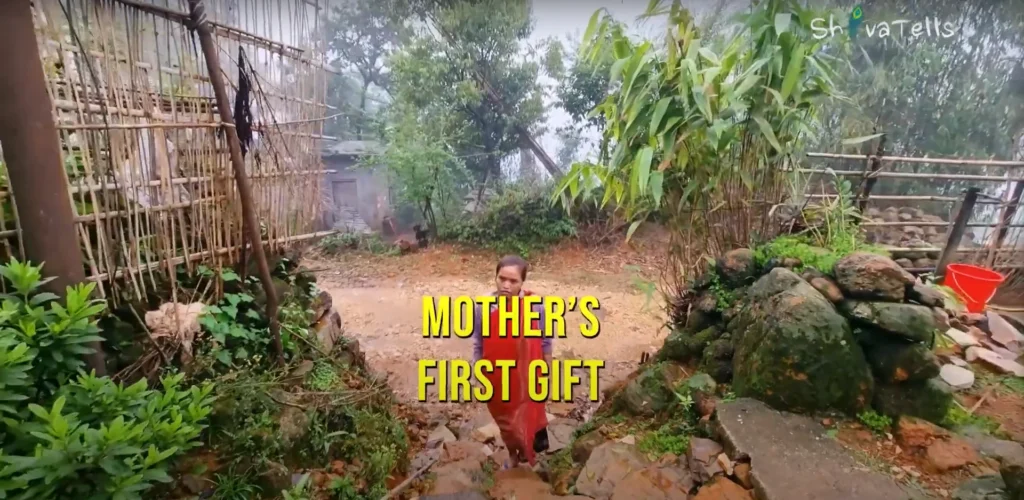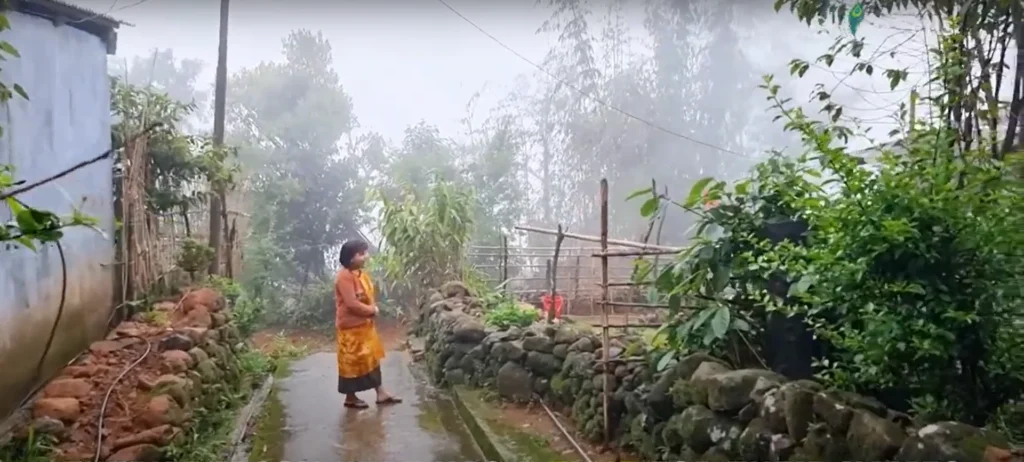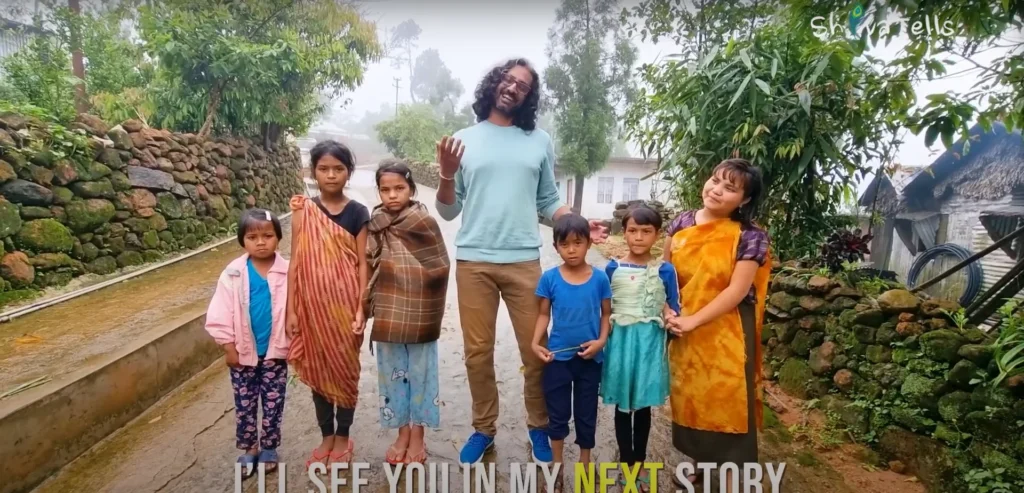As a travel vlogger, I’ve had the privilege of visiting many beautiful places, but Kongthong has a charm like no other. This village is famous for its unique tradition of giving each newborn a melodious tune as a name. Yes, you heard that right! In Kongthong, names are songs.
When I first heard about Kongthong, I was curious to experience this enchanting tradition firsthand. As I arrived in the village, I could feel a sense of excitement in the air. The vibrant greens of the East Khasi Hills surrounded me, creating a picturesque backdrop that seemed straight out of a storybook. Little did I know that my journey here would be filled with heartwarming encounters and a deeper understanding of the bond between music and identity.

Table of Contents
The Origin of Musical Names

The story of musical names in Kongthong is rooted in history. It dates back to ancient times when the Khasi people sought unique ways to connect with their children. In an era without modern communication, mothers found a beautiful solution. They created tunes to serve as personal identifiers for their newborns. As I spoke to the villagers, they shared that this tradition has been passed down through generations. Each melody carries a sense of love and affection, a timeless connection between mother and child.
Listening to their stories, I learned that the tradition symbolizes much more than just a name. It is an expression of gratitude to the gods, a way to seek blessings for the child. The villagers believe that each melody holds power, guiding the children as they grow. This made me realize how music is deeply woven into their cultural fabric, serving as a bridge between the spiritual and the earthly.
How Names Are Created
Every name in Kongthong is crafted with care and creativity. The naming process is quite fascinating. When a child is born, the mother composes a unique tune that combines long and short notes. It’s a beautiful melody that reflects her feelings at that moment. I met a young mother named Aina who shared her experience of naming her baby girl. With a twinkle in her eye, she hummed the tune she had created. It was a light, playful melody that echoed her joy and love.
“What if someone else has the same tune?” I asked. Aina smiled and explained that each melody is distinct, even if they share similar notes. It is the combination and rhythm that make it unique. This process of naming is not just a formality; it is a labor of love, a way for mothers to express their hopes and dreams for their children.
Cultural Significance of Musical Names
As I delved deeper into Kongthong’s culture, I began to understand the profound significance of these musical names. They are a vital part of the villagers’ identity and help shape their community. When someone hears a tune, they instantly know who it belongs to. This practice fosters a strong sense of belonging and unity among the villagers.
During my visit, I witnessed the power of these tunes in action. I watched as a group of children played in the village square, their laughter ringing through the air. A mother called her son by his tune, and he responded with a wide grin. This simple act demonstrated how these melodies are woven into their everyday lives. It reminded me of how important it is to have a name that carries meaning, a name that resonates with our identity.
Everyday Life in Kongthong

Life in Kongthong is peaceful and filled with a sense of harmony. The villagers take pride in their traditions, and music is an integral part of their daily lives. I was amazed to see how the tunes flowed through the village like a gentle river, creating a soothing atmosphere.
In the mornings, I joined some of the villagers as they gathered for breakfast. The aroma of freshly cooked rice and local vegetables filled the air. As we sat down, I noticed how they greeted each other using their musical names. It was a beautiful symphony of sounds that made the meal feel special. The tunes were not just names; they were a way to connect, to share moments, and to build bonds within the community.
During my stay, I participated in various activities that showcased their rich culture. I joined a local dance group, and we danced to the rhythms of traditional Khasi music. Each dance move felt like a celebration, and the villagers welcomed me with open arms. I felt grateful to be a part of their world, even if it was just for a short time.
The Role of Music in Communication
One of the most fascinating aspects of Kongthong is how music serves as a means of communication. The villagers use their tunes to call out to each other from a distance. It is a simple yet effective way to convey messages. I witnessed this firsthand when a group of villagers gathered to discuss community matters. Instead of shouting or using conventional words, they called each other by their musical names, which echoed through the hills.
I found this method of interaction incredibly heartwarming. It creates a sense of familiarity and joy among the villagers. They would respond with their own tunes, and it felt like a beautiful melody dancing through the air. I couldn’t help but smile at how music had the power to bring them together, creating a community filled with love and connection.
Challenges Facing the Tradition
However, as I spent time in Kongthong, I became aware of the challenges facing this beautiful tradition. Modernization has begun to creep into the village. Many young villagers are moving to cities for work, leaving behind their roots. With the rise of technology, fewer people are using musical names. I spoke with a few elders who expressed concern that the tradition might fade away.
They shared stories of their childhood when tunes filled the air, and every child was cherished with a unique melody. The elders are worried that the younger generation may forget the importance of this cultural heritage. It was a sobering thought, and it made me realize how vital it is to preserve these traditions.
Efforts to Preserve the Tradition
Despite these challenges, I was heartened to see that there are efforts to preserve this musical heritage in Kongthong. A local man named Daren has dedicated himself to promoting and teaching the tradition to the younger generation. He believes that the beauty of musical names should not be lost. Daren organizes workshops to teach children about their cultural roots, encouraging them to embrace their melodies.
During one of these workshops, I witnessed the joy on the faces of the children as they learned to create their own tunes. They giggled and played, their laughter echoing through the hills. It was a reminder that while change may come, the spirit of Kongthong remains strong. The villagers are determined to keep their tradition alive, and I felt inspired by their resilience.
Visitor Experiences in Kongthong

As word about Kongthong’s musical tradition spreads, more visitors are coming to experience this unique culture. I met several travelers who were captivated by the melodies of the village. They shared their experiences of being welcomed by the villagers and immersing themselves in the local way of life.
One traveler told me how she felt a deep connection with the villagers when she heard them call each other by their tunes. It was like stepping into a different world, one filled with warmth and joy. I realized that Kongthong is not just a place to visit; it is an experience that stays with you long after you leave.
How to Reach Kongthong
If you’re thinking about visiting Kongthong, getting there is quite simple. The village is a few hours’ drive from Shillong, the capital of Meghalaya. You can take a bus or hire a taxi to reach this beautiful destination. As you travel, you’ll be surrounded by breathtaking landscapes and fresh air.
When you arrive in Kongthong, you will feel the music in the air. The villagers will greet you with smiles, and you’ll quickly be drawn into their world. I encourage everyone to make the journey; it is an experience you won’t forget.
Comparisons with Other Cultures

Kongthong’s tradition of musical names is unique, yet it resonates with similar practices in other cultures. For instance, some African tribes use songs to name their children. In Japan, there are names that carry meanings based on nature. I found it fascinating to see how different cultures create their identities through names.
However, what makes Kongthong stand out is the way music is intertwined with every aspect of life. The melodies are not just names; they are a celebration of life itself. This realization made me appreciate the richness of human experience across the globe.
Conclusion:
As I reflected on my time in Kongthong, I felt a mix of emotions. The melodies of this village filled my heart with joy, and the stories of the villagers inspired me. I believe that as long as the people of Kongthong continue to sing their tunes, this beautiful tradition will thrive.
I hope that future generations will carry forward this legacy, ensuring that Kongthong remains a place where names are songs. This village has a magical quality that deserves to be preserved. So, let’s keep the spirit of Kongthong alive and celebrate the beauty of its musical tradition for many years to come.
Read More Stories from Meghalaya
- Aminda Rangsa: Meghalaya’s Hidden Sculpture Village
- The Mystical Monoliths of Meghalaya: My Journey to Mawsymai Caves
Watch More Stories of Meghalaya
